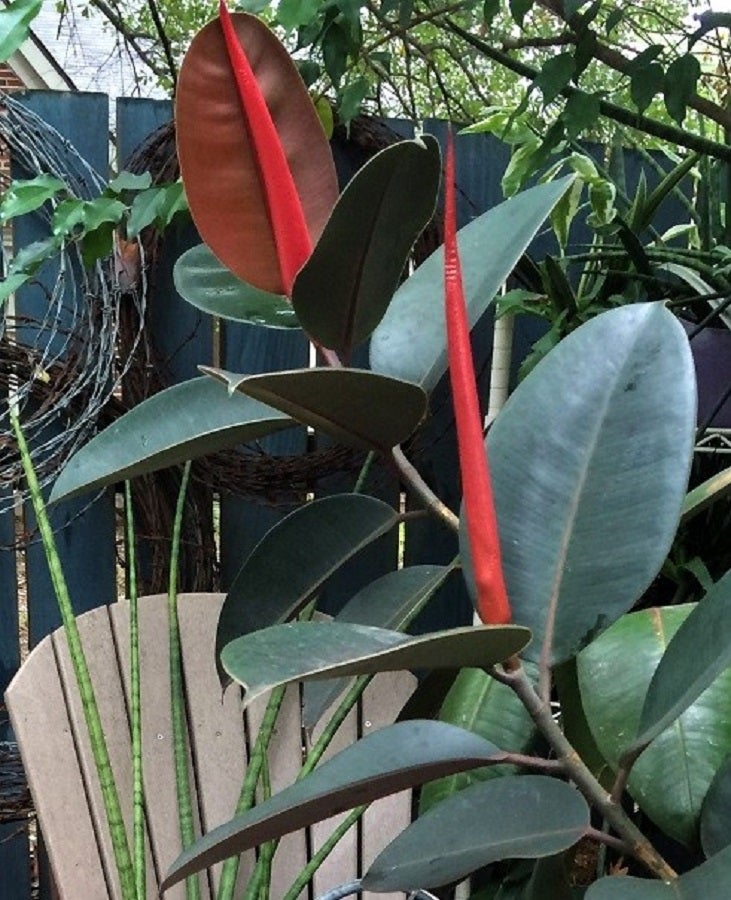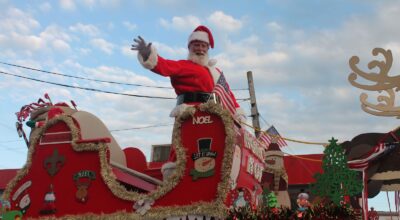The story of Big Jim
Published 10:59 am Sunday, December 19, 2021
|
Getting your Trinity Audio player ready...
|
Poor Big Jim, my oversized potted rubber tree. Now close to half a century old, the aging tropical giant wannabe keeps trying to do his whale of a thing, in a little bathtub of a pot.
He’s been through thick and thin with me, from being rooted as a cutting off a monster tree when I was stationed in San Diego back in my 1970s navy days, through a few unsuitably dark habitats during our college years, and a lot of hit-and-miss situations since.
Nowadays, because I travel so much for weeks and months on end, he is safely ensconced in my son’s beautiful big house with its tall windows and guaranteed warmth. Every time I visit, my granddaughter Ali and I give him a physical exam, making sure he’s comfortable in his now forever home.
Still, Big Jim longs to be his big natural self; trouble is, his ambitions are hampered by the size of his pot, large as it is. Unlike his parent plant growing outdoors in Southern California’s subtropics, unless I haul him to a frost-free climate to set him free to roam, there’s no way he’ll ever get large enough to shade a school bus.
So, life as a potted plant has harsh constraints. Every winter my cold-sensitive plants collected from afar are clustered by a big window in a humidity-sharing mini-jungle. I have an extensive collection of Sansevierias (you can’t imagine how many different forms of mother-in-law tongue there are), plus a large weeping fig nearly as old as Big Jim and a huge ribbon Dracaena that get cut back to leafless hat racks every fall to reduce the annual leaf raking that happens naturally when plants are brought in from outdoors.
Like goldfish in a bowl yearning for the ocean, all are victims of their confinement. Because they can’t forage naturally for survival, they have to be provided regular nurture and nutrients – essentially artificial life support.
And even shade-loving understory jungle plants need energy-giving light or they will get spindly and weak. Most do best beside or near a south, east, or west window, or under an expensive array of indoor lighting; without enough of this radiated energy they may subsist for years, but they will fail to live even close to their potential. And it doesn’t take a Buddhist to appreciate that plants, in their way, can be miserable.
Those that get enough light and warmth, plus water as needed (not as much in the winter), and occasional fertilizers, have two more difficulties to deal with: Dust, which covers their light sensors, and humidity which thanks to modern heating and air conditioning is nigh impossible indoors. Dehumidifiers and smaller windows are the main reasons we can’t grow ferns and palms indoors as well as did the Victorians; low humidity and inattention also prevent my growing African violets like my grandmother’s.
Luckily, there are quite a few plants that tolerate fairly low light and low humidity, essentially those with big, slick leaves. Among my favs are rubber tree, weeping fig, Chinese evergreen (Aglaonema, one of the most dependable indoors foliage beauties), ZZ plant, dwarf and regular Shefflera, Dracaenas, Philodendrons, wax plant (Hoya), dumb cane (Dieffenbachia), and of course Sansevierias. There are others, but these are real survivors.
Still, like a cat looking wistfully out the window from the safety of indoors, Big Jim, bless his woody heart, will never roam free, so my son and I provide as best we can for his basic needs.
With enough love and its attendant care, poor Big Jim may hang in there for many more years.
Felder Rushing is a Mississippi author, columnist, and host of the “Gestalt Gardener” on MPB Think Radio. Email gardening questions to rushingfelder@yahoo.com.






